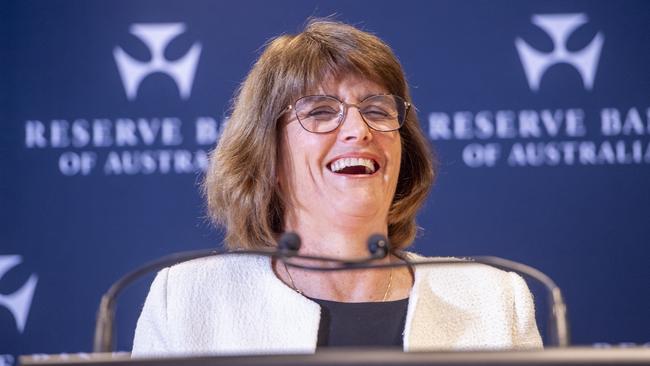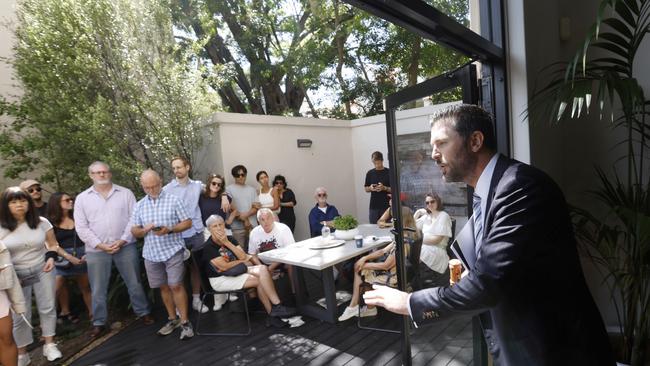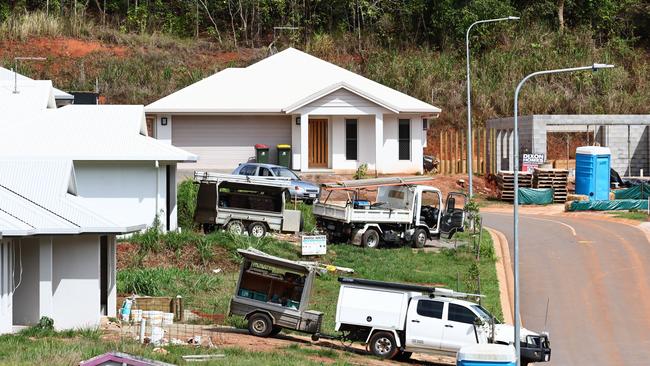RBA set to cut rates but don’t expect much guidance
The Reserve Bank will almost certainly cut interest rates after its February board meeting concludes on Tuesday, but don’t expect much guidance on the outlook.

The Reserve Bank will almost certainly cut interest rates after its February board meeting concludes on Tuesday, although when it comes to the interest rate outlook, Australians will be left in the dark.
The market-implied chance of a 25 basis points cut in the overnight cash rate target cut has hovered around 85-100 per cent since the December quarter CPI report last month showed underlying inflation falling toward the 2-3 per cent target band faster than expected.
In recent days, economists have said the chance of a cut this month is closer to 60 per cent. However, in practical terms, the chance of a cut early this year was already high after the RBA’s December meeting – when the board was “gaining some confidence that inflation is moving sustainability toward the target”.
No doubt that chance became very high after the CPI report.
Particularly in the context of a central bank that has just come through an official review, much of which focused on its communication with the public after the ill-fated forward guidance provided by its former governor during the Covid-19, the RBA is very likely to cut rates this month.

Given that the board was “gaining some confidence” in December that “inflation is moving sustainably towards the target range”, it must now have greater confidence after the December quarter CPI report, notwithstanding the lower-than-expected unemployment rate since then.
A decision to hold the cash rate at a more than 12-year high of 4.35 per cent – a level that the RBA considers “restrictive” for the economy – would be hard to explain to investors, homeowners and businesses amid weak economic growth and subdued consumer and business sentiment.
It could spark a sharp fall in the share market after the ASX 200 hit a record high of 8615.2 points last week. The Australian dollar would be likely to jump 0.5-1 per cent, according to Deutsche Bank.
“To my mind, the case for a rate cut this month has been clear ever since the release of the Q4 CPI report,” said Betashares chief economist, David Bassanese.
“In short, underlying inflation has come down quicker than the RBA expected, and the economy deserves to be rewarded for its good behaviour with a rate cut as soon as possible.”
“To not cut rates this week would effectively renege on a promise to deliver interest rate relief once there was sufficient progress on lowering inflation – it would break the hearts of millions of Australians and undermine the RBA’s still tarnished public reputation.
Bassanese would like to see the RBA cut by 35 basis points to 4 per cent, just to get the policy rate back to “cleaner 0.25 per cent level increments”. Of course, outside of a crisis, it would be unusual for the RBA to do more than 25 points in one go. The US Federal Reserve cut, but 50 basis points in its first rate cut in September, but at that time the US had just come through a mini “growth scare”.
The RBA may be more inclined to end the rate cutting cycle with a smaller cut than start with a bigger than expected cut, particularly in light of what it could do to the property market and Aussie dollar.
However, Bassanese says it could offset the stimulatory impact by playing down the prospect of another cut anytime soon. In other words, it could deliver a “hawkish cut”.
The arguments for the RBA to stay on the sidelines this month include, a healthy and still tight labour market, continued growth in public demand, increased global uncertainty in the early days of new US Administration, a new monetary policy board that comes into effect in March, Su-Lin Ong, chief economist at RBC Capital Markets.
“However, the lower-than-expected CPI data and most of the underlying details suggest that core inflation has probably returned to target in the current quarter, six months earlier than the RBA’s November forecasts,” she said.
In her view, the RBA’s revised forecasts are likely to show underlying inflation hitting the midpoint of the target band by the second half of 2025.
“The RBA will likely be increasingly confident that inflation has returned sustainably to target, despite the resilience in the labour market, and can credibly argue that it is meeting its dual objectives,” Ms Ong said.

But in any case, the RBA is unlikely to give any interest rate guidance at this meeting.
The Bank tends to acknowledge the effectiveness of its policy changes by refraining from spelling out a need for further moves in a given direction immediately after a policy change.
The Board will probably also want to retain maximum optionality, given that there are some major international and domestic events on the three-month horizon that could affect the outlook.
Apart from all the usual economic data, starting with December quarter wages data on Wednesday and January labour force data later this week, China’s policymakers have strongly hinted at major fiscal and monetary policy stimulus stemming from the Politburo meeting on March 5-13.
Of course, China’s latest policy plans could well be delayed until the outcome of another “known unknown” – the comprehensive review of US trade policy, due to be completed by April 1.
The outcome of US-Russia talks this week to end the Ukraine-Russia war could also affect the outlook for energy, particularly natural gas prices, which could have implications for Australia.
Then there’s the shape of fiscal policy in Australia, which should be clarified by the Federal Election, due to be held on or before May 17.




To join the conversation, please log in. Don't have an account? Register
Join the conversation, you are commenting as Logout